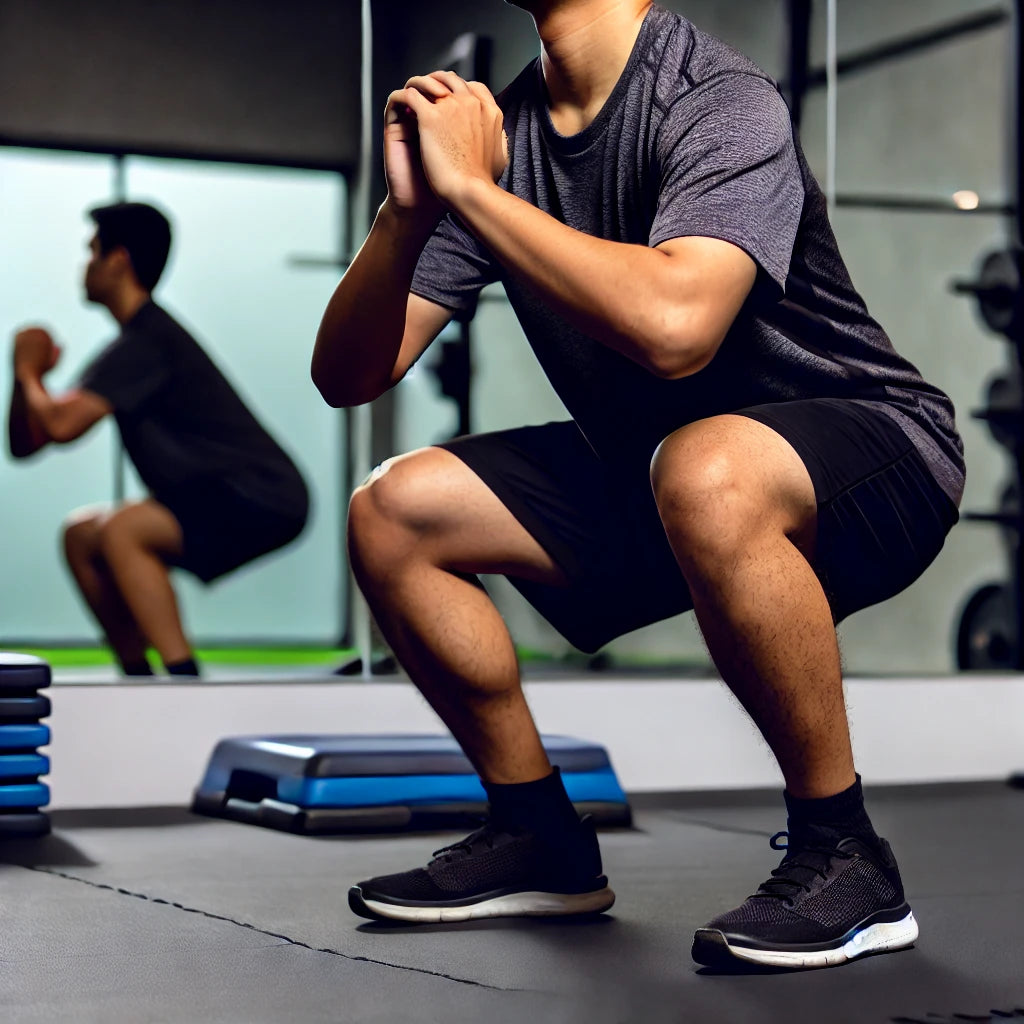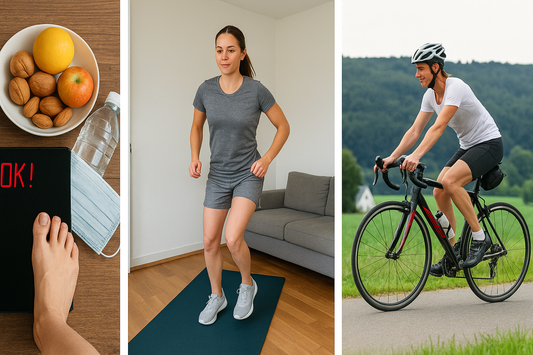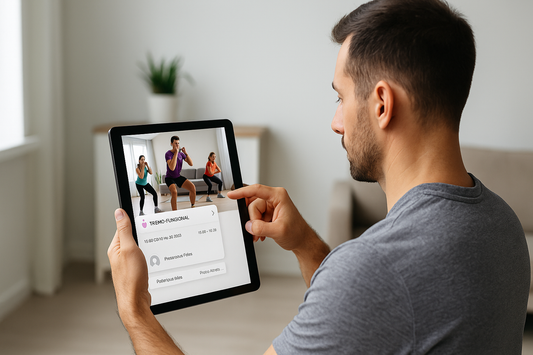
How to Improve Your Squat Posture
Share
Squats are one of the most effective and complete exercises for working your legs, glutes and core, and are also essential for developing strength and stability. However, performing squats with incorrect posture can cause injuries and compromise the results of your workout. If you want to improve your posture when squatting, follow these essential tips.
Further Reading: The Best Home Workouts for Beginners
1. Proper Warm-up
Before you begin any strength training exercise, warming up is crucial. Dynamic movements like lunges, hip rotations, and hamstring stretches help prepare your muscles and joints for the squatting movement. A good warm-up improves mobility and allows for more fluid execution.
2. Well Positioned Feet
Foot position is the basis of a correct squat. Keep your feet shoulder-width apart or slightly wider, with your toes pointed slightly outward. This position provides more stability and allows for better activation of the muscles involved. Avoid pointing your toes forward or spreading them too far apart, as this can compromise your posture and cause strain on your knees.
3. Activate the Core
Your core (abdomen and lower back) should be engaged throughout the movement to protect your spine and maintain balance. Imagine that you are trying to "push" your belly button inwards and upwards. A strong and stable posture in the central region of the body prevents excessive curvature of the back, which can cause injuries.
4. Weight Distribution
During squats, your body weight should be evenly distributed across your feet, with emphasis on your heels and the outsides of your feet. Many people make the mistake of leaning too far forward, which puts strain on their knees and toes. Keep your chest up and your spine neutral, with your eyes looking straight ahead.
5. Controlled Descent
Lowering in a controlled manner is crucial to maintaining good posture. As you squat, push your hips back as if you were going to sit down into an invisible chair. Keep your knees in line with your feet and avoid them moving inwards (valgus). The depth of your squat should be comfortable for you; ideally, try to lower until your thighs are parallel to the floor or slightly below, without losing stability.
6. Knee Alignment
Your knees should follow the direction of your toes. A common mistake is to let your knees “fall” inward, which can put stress on your joints and increase your risk of injury. To avoid this, focus on keeping your knees “pushing” outward as you lower and raise your squat.
7. Don't Lift Your Heels
Lifting your heels while performing a squat is a sign of poor ankle mobility or poor balance. If you find yourself lifting your heels, try stretching your lower legs more before beginning the exercise and consider wearing appropriate footwear with good support.
8. Strengthen Core and Mobility
If you find that you struggle to maintain proper posture during squats, it may be beneficial to spend some time strengthening your core and working on mobility. Exercises such as planks, sit-ups, and hip and ankle stretches can improve your ability to maintain control and stability during squats.
9. Use a Mirror or Record Your Movement
To check if you are performing the squat correctly, you can use a mirror to look at yourself from the side and front. Alternatively, record yourself doing the exercise on video. This will allow you to identify any flaws in your posture and correct them effectively.
10. Consult a Professional
If, even after applying these tips, you still have trouble performing squats correctly, it may be a good idea to consult a trainer or physical therapist. A specialist can assess your posture, mobility, and flexibility, and adjust the movement according to your specific needs.
Conclusion
Improving your squat form not only prevents injuries, but also maximizes the benefits of this powerful exercise. Follow these tips, practice consistently, and watch the results show in your workout. Always remember to start slowly and progress gradually, respecting your body’s limits.
Get ready to squat like a pro and reach new levels of strength and stability!
Other Recommended Readings on the Blog:
- How to Stay Motivated When Working Out at Home – Tips to stay focused and not give up on your goals.
- The Best Home Exercises for Beginners – A complete introduction to the most effective exercises for beginners.
- Strength Training vs. Cardio : Which is Better for Weight Loss ? – Clarifies doubts about the benefits of each type of training and how to combine them.
- 10 Simple Pieces of Equipment That Will Make All the Difference in Your Home Workout – Discover which accessories are worth having at home to maximize your workouts.
If you are already thinking about transforming your body, now is the perfect time to get started! Together, we will build the best version of you.
Train wherever and whenever you want!
Transform your training routine with Training 365!
Access to 365 annual trainings (50-60 minutes per session), providing you with a varied daily plan that you can carry out at home, outdoors or at the gym . With a new workout every day, you'll stay motivated, active and ready to achieve your fitness goals, whether you're just starting out or improving your performance.
What it includes:
- Daily access to 50-60 minute workouts
- Access to Home Workout ® App
- Workouts for all levels
- Flexibility to train anywhere
Value: €18.15/month
Examples of plans Training 365 :
The Christmas season is almost here, and with it comes the usual search for the perfect gift. If you want to give something truly special and meaningful this year, we have a unique suggestion: well-being !
Offer Well-Being to those you LOVE!
With the Home Workout Gift Card , you give your loved ones the opportunity to take care of their health and body in a practical way, without leaving home.




